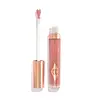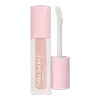What's inside
What's inside
 Key Ingredients
Key Ingredients

 Benefits
Benefits

 Concerns
Concerns

 Ingredients Side-by-side
Ingredients Side-by-side

Polybutene
Octyldodecanol
EmollientDicaprylyl Carbonate
EmollientDiisostearyl Malate
EmollientBis-Diglyceryl Polyacyladipate-2
EmollientPentaerythrityl Tetraisostearate
EmollientC18-36 Acid Triglyceride
EmollientIsohexadecane
EmollientPEG-30 Dipolyhydroxystearate
EmulsifyingStearalkonium Hectorite
Gel FormingSimmondsia Chinensis Seed Oil
EmollientCaprylic/Capric Triglyceride
MaskingSoluble Collagen
HumectantMentha Piperita Oil
MaskingPunica Granatum Flower Extract
Skin ConditioningSclerocarya Birrea Seed Oil
HumectantSodium Hyaluronate
HumectantTocopheryl Acetate
AntioxidantTocopherol
AntioxidantLeuconostoc/Radish Root Ferment Filtrate
AntimicrobialTripeptide-1
Skin ConditioningPalmitoyl Tripeptide-1
Skin ConditioningEthylhexyl Palmitate
EmollientMenthol
MaskingPropylene Carbonate
SolventTribehenin
EmollientPolyglyceryl-3 Diisostearate
EmulsifyingEthylene/Propylene/Styrene Copolymer
Butylene/Ethylene/Styrene Copolymer
Sorbitan Isostearate
EmulsifyingTriethoxycaprylylsilane
Aluminum Hydroxide
EmollientPhenoxyethanol
PreservativeXanthan Gum
EmulsifyingRetinyl Palmitate
Skin ConditioningLactic Acid
BufferingPentaerythrityl Tetra-Di-T-Butyl Hydroxyhydrocinnamate
AntioxidantLimonene
PerfumingCI 77891
Cosmetic ColorantIron Oxides
CI 15850
Cosmetic ColorantPolybutene, Octyldodecanol, Dicaprylyl Carbonate, Diisostearyl Malate, Bis-Diglyceryl Polyacyladipate-2, Pentaerythrityl Tetraisostearate, C18-36 Acid Triglyceride, Isohexadecane, PEG-30 Dipolyhydroxystearate, Stearalkonium Hectorite, Simmondsia Chinensis Seed Oil, Caprylic/Capric Triglyceride, Soluble Collagen, Mentha Piperita Oil, Punica Granatum Flower Extract, Sclerocarya Birrea Seed Oil, Sodium Hyaluronate, Tocopheryl Acetate, Tocopherol, Leuconostoc/Radish Root Ferment Filtrate, Tripeptide-1, Palmitoyl Tripeptide-1, Ethylhexyl Palmitate, Menthol, Propylene Carbonate, Tribehenin, Polyglyceryl-3 Diisostearate, Ethylene/Propylene/Styrene Copolymer, Butylene/Ethylene/Styrene Copolymer, Sorbitan Isostearate, Triethoxycaprylylsilane, Aluminum Hydroxide, Phenoxyethanol, Xanthan Gum, Retinyl Palmitate, Lactic Acid, Pentaerythrityl Tetra-Di-T-Butyl Hydroxyhydrocinnamate, Limonene, CI 77891, Iron Oxides, CI 15850
Polybutene
Octyldodecanol
EmollientHydrogenated Polyisobutene
EmollientSimmondsia Chinensis Seed Oil
EmollientDextrin Palmitate
EmulsifyingSilica Dimethyl Silylate
EmollientRicinus Communis Seed Oil
MaskingEthylene/Propylene/Styrene Copolymer
Parfum
MaskingPentylene Glycol
Skin ConditioningVanillyl Butyl Ether
MaskingPunica Granatum Flower Extract
Skin ConditioningBenzyl Nicotinate
Skin ConditioningTocopheryl Acetate
AntioxidantEthylhexylglycerin
Skin ConditioningCaprylic/Capric Triglyceride
MaskingTribehenin
EmollientPolyglyceryl-3 Diisostearate
EmulsifyingSodium Hyaluronate
HumectantMethyl Nicotinate
SoothingButylene/Ethylene/Styrene Copolymer
Hydrogenated Coco-Glycerides
EmollientCapsicum Annuum Fruit Extract
AntimicrobialHydrogenated Castor Oil
EmollientCapsicum Frutescens Fruit Extract
Skin ConditioningGlycine Soja Oil
EmollientZingiber Officinale Root Oil
MaskingHelianthus Annuus Seed Extract
Skin ConditioningPentaerythrityl Tetra-Di-T-Butyl Hydroxyhydrocinnamate
AntioxidantGlyceryl Stearate
EmollientHelianthus Annuus Seed Oil
EmollientVaccinium Myrtillus Fruit Extract
Skin ConditioningTocopherol
AntioxidantLimonene
PerfumingLinalool
PerfumingEugenol
PerfumingCitral
PerfumingCI 77891
Cosmetic ColorantCI 15850
Cosmetic ColorantCI 45410
Cosmetic ColorantPolybutene, Octyldodecanol, Hydrogenated Polyisobutene, Simmondsia Chinensis Seed Oil, Dextrin Palmitate, Silica Dimethyl Silylate, Ricinus Communis Seed Oil, Ethylene/Propylene/Styrene Copolymer, Parfum, Pentylene Glycol, Vanillyl Butyl Ether, Punica Granatum Flower Extract, Benzyl Nicotinate, Tocopheryl Acetate, Ethylhexylglycerin, Caprylic/Capric Triglyceride, Tribehenin, Polyglyceryl-3 Diisostearate, Sodium Hyaluronate, Methyl Nicotinate, Butylene/Ethylene/Styrene Copolymer, Hydrogenated Coco-Glycerides, Capsicum Annuum Fruit Extract, Hydrogenated Castor Oil, Capsicum Frutescens Fruit Extract, Glycine Soja Oil, Zingiber Officinale Root Oil, Helianthus Annuus Seed Extract, Pentaerythrityl Tetra-Di-T-Butyl Hydroxyhydrocinnamate, Glyceryl Stearate, Helianthus Annuus Seed Oil, Vaccinium Myrtillus Fruit Extract, Tocopherol, Limonene, Linalool, Eugenol, Citral, CI 77891, CI 15850, CI 45410
 Reviews
Reviews

Ingredients Explained
These ingredients are found in both products.
Ingredients higher up in an ingredient list are typically present in a larger amount.
We don't have a description for Butylene/Ethylene/Styrene Copolymer yet.
This ingredient is an emollient, solvent, and texture enhancer. It is considered a skin-softener by helping the skin prevent moisture loss.
It helps thicken a product's formula and makes it easier to spread by dissolving clumping compounds.
Caprylic Triglyceride is made by combining glycerin with coconut oil, forming a clear liquid.
While there is an assumption Caprylic Triglyceride can clog pores due to it being derived from coconut oil, there is no research supporting this.
Learn more about Caprylic/Capric TriglycerideCi 15850 is the pigment color red. It is an azo dye and created synthetically.
Azo dyes need to be thoroughly purified before use. This allows them to be more stable and longer-lasting.
This ingredient is common in foundations, lipsticks, and blushes. This color is described as brown/orangey red.
It has many secondary names such as Red 6 and Red 7. According to a manufacturer, Red 6 usually contains aluminum.
Learn more about CI 15850Ci 77891 is a white pigment from Titanium dioxide. It is naturally found in minerals such as rutile and ilmenite.
It's main function is to add a white color to cosmetics. It can also be mixed with other colors to create different shades.
Ci 77891 is commonly found in sunscreens due to its ability to block UV rays.
Learn more about CI 77891We don't have a description for Ethylene/Propylene/Styrene Copolymer yet.
Limonene is a fragrance that adds scent and taste to a formulation.
It's found in the peel oil of citrus fruits and other plants such as lavender and eucalyptus. The scent of limonene is generally described as "sweet citrus".
Limonene acts as an antioxidant, meaning it helps neutralize free radicals.
When exposed to air, oxidized limonene may sensitize the skin. Because of this, limonene is often avoided by people with sensitive skin.
The term 'fragrance' is not regulated in many countries. In many cases, it is up to the brand to define this term. For instance, many brands choose to label themselves as "fragrance-free" because they are not using synthetic fragrances. However, their products may still contain ingredients such as essential oils that are considered a fragrance.
Learn more about LimoneneOctyldodecanol is a fatty alcohol. It is primarily used to enhance the texture of products.
As an emulsifier, Octyldodecanol helps prevent the oils and waters from separating. It also prevents ingredients from creating foam when shaken.
Octyldodecanol is created by reducing fatty acid to an alcohol.
Due to its high molecular weight, it does not get absorbed into the skin.
Learn more about OctyldodecanolPentaerythrityl Tetra-Di-T-Butyl Hydroxyhydrocinnamate (long name, huh?) is a synthetic antioxidant.
It is used to help stabilize other antioxidants or prevent the color from changing in a product.
As an antioxidant, it helps fight free-radical molecules. Free-radical molecules are capable of damaging our cells and other genetic material. Thus, antioxidants may reduce the signs of aging.
This ingredient is oil-soluble.
Learn more about Pentaerythrityl Tetra-Di-T-Butyl HydroxyhydrocinnamatePolybutene is used to help control the viscosity of a product. This just means it helps adjusts the texture.
It is a polymer and does not get absorbed into the skin due to its large size.
Studies found this ingredient did not irritate skin in concentrations below 15%.
Learn more about PolybutenePolyglyceryl-3 Diisostearate is an emulsifer and emollient. It comes from Isostearic Acid and Polyglycerin-3.
As an emulsifier, it helps stabilize products by preventing oils and water from separating.
This ingredient may not be Malassezia folliculitis, or fungal acne safe.
Learn more about Polyglyceryl-3 DiisostearatePomegranate flower extract has skin conditioning properties.
According to analysis of the flower, it is rich in the triterpenes ursolic acid and oleanolic acid.
Triterpenes are chemical compounds found in various plants such as pomegranates, apples, basil, and rosemary. They have been shown to have anti-inflammatory and antioxidant properties.
The flowers also contain gallic acid and ellagic acid, two types of polyphenols. They possess antioxidant, anti-inflammatory, and antimicrobial properties.
A study from 2017 found pomegranate flower to help heal scars and wounds in rats. Another study from 2020 found this ingredient to help decrease lip wrinkles and increase lip volume.
This ingredient also showed positive effects on dandruff removal in a study from 2015.
Learn more about Punica Granatum Flower ExtractThis oil comes from the seeds of the desert shrub called Jojoba. It is more commonly known as jojoba oil, a non-comedogenic oil.
Jojoba oil does not contain fragrance and has many fatty-acids, making it a great soothing ingredient.
It also contains Vitamin E, a great moisturizing ingredient. Vitamin E is also an antioxidant and protects your skin against oxidative damage.
This ingredient humectant properties, meaning it helps draw moisture from the air. This helps keep your skin hydrated.
While jojoba has antibacterial properties, it is only able to kill some strains of bacteria.
Studies also show it helps in wound healing. In fact, Indigenous cultures have used jojoba as a moisturizer and to help treat burns for centuries.
Fun fact: Jojoba oil similar to natural human skin sebum, so it has a great effect on dry skin. It is also promising with helping to regulate sebum production.
Due to its fatty acid content, Jojoba oil may not be fungal acne safe. We recommend speaking with a professional if you have any concerns.
Learn more about Simmondsia Chinensis Seed OilSodium Hyaluronate is hyaluronic acid's salt form. It is commonly derived from the sodium salt of hyaluronic acid.
Like hyaluronic acid, it is great at holding water and acts as a humectant. This makes it a great skin hydrating ingredient.
Sodium Hyaluronate is naturally occurring in our bodies and is mostly found in eye fluid and joints.
These are some other common types of Hyaluronic Acid:
Learn more about Sodium HyaluronateTocopherol (also known as Vitamin E) is a common antioxidant used to help protect the skin from free-radicals and strengthen the skin barrier. It's also fat soluble - this means our skin is great at absorbing it.
Vitamin E also helps keep your natural skin lipids healthy. Your lipid skin barrier naturally consists of lipids, ceramides, and fatty acids. Vitamin E offers extra protection for your skin’s lipid barrier, keeping your skin healthy and nourished.
Another benefit is a bit of UV protection. Vitamin E helps reduce the damage caused by UVB rays. (It should not replace your sunscreen). Combining it with Vitamin C can decrease sunburned cells and hyperpigmentation after UV exposure.
You might have noticed Vitamin E + C often paired together. This is because it is great at stabilizing Vitamin C. Using the two together helps increase the effectiveness of both ingredients.
There are often claims that Vitamin E can reduce/prevent scarring, but these claims haven't been confirmed by scientific research.
Learn more about TocopherolTocopheryl Acetate is AKA Vitamin E. It is an antioxidant and protects your skin from free radicals. Free radicals damage the skin by breaking down collagen.
One study found using Tocopheryl Acetate with Vitamin C decreased the number of sunburned cells.
Tocopheryl Acetate is commonly found in both skincare and dietary supplements.
Learn more about Tocopheryl AcetateTribehenin comes from glycerin and behenic acid.
It is used as an emollient, or moisturizer. Emollients form a thin barrier on skin to prevent moisture from escaping.
This ingredient may not be Malassezia folliculitis, or fungal-acne safe.
Learn more about Tribehenin